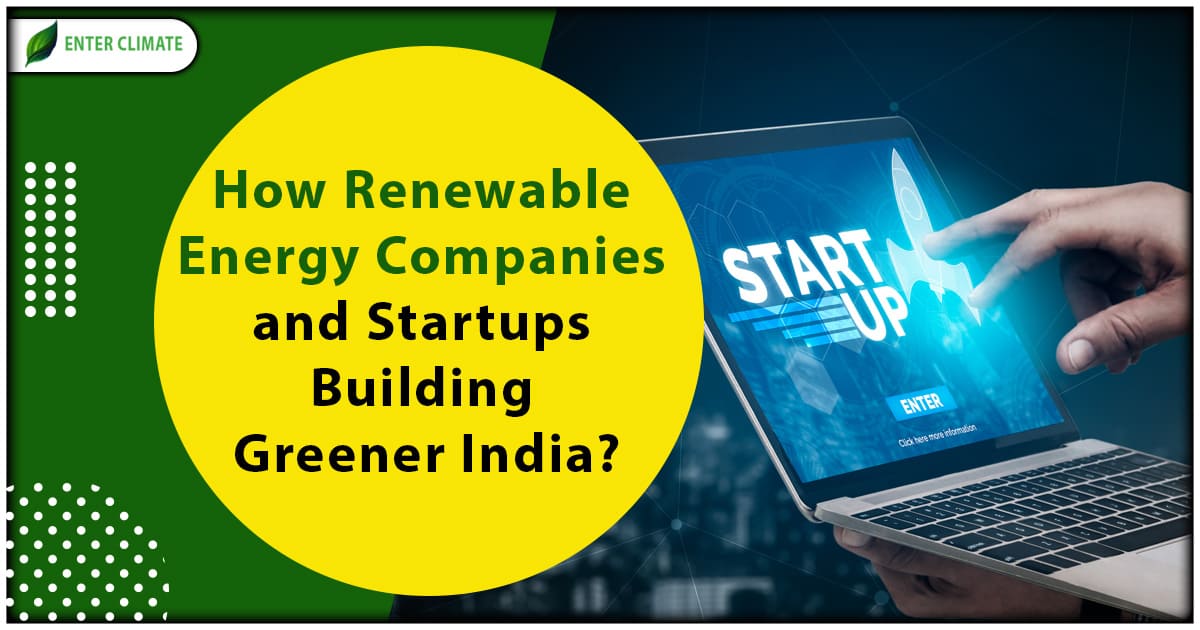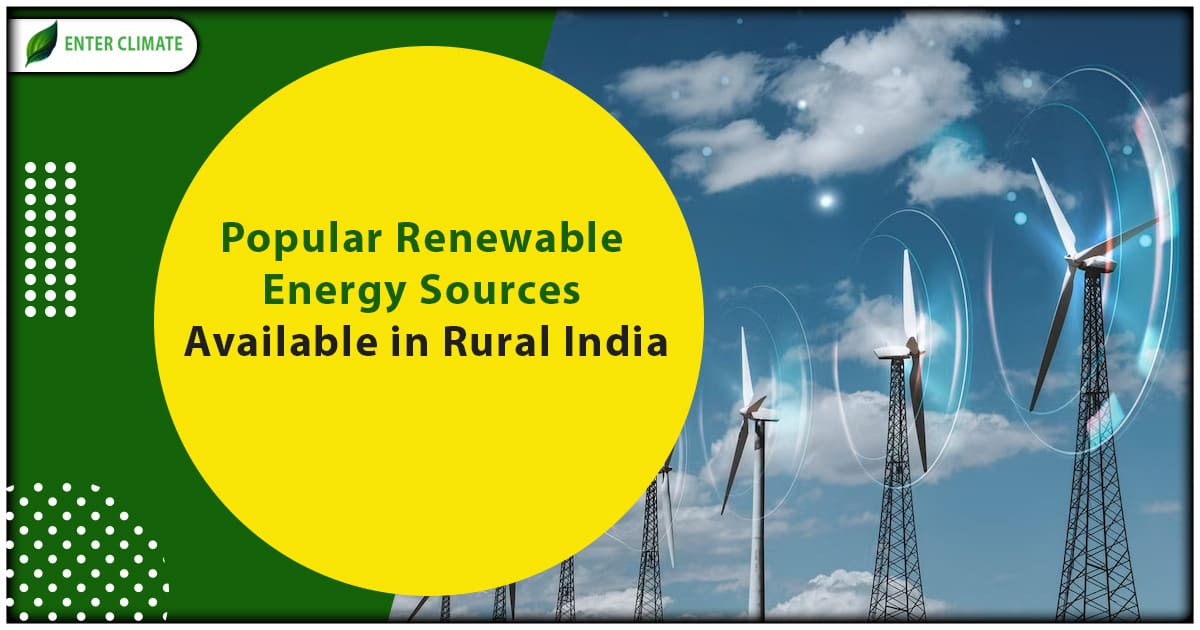Renewable Energy Sources and Their Potential in India
 24 Jul, 2023
24 Jul, 2023 
India, with a staggering population of 1.4 billion, is a rapidly advancing economically with an immense appetite for energy. Today, with an installed electrical capacity exceeding 4 lacks MW, India has successfully transitioned into a nation with surplus power. Moreover, recognizing the significance of sustainable development and green energy, India is progressively shifting its power generation mix towards a greater emphasis on renewable sources. As the world’s 3rd largest energy consumer, India holds prominent positions in renewable energy installations, ranking 4th globally in Renewable Energy Installed Capacity, Wind Power capacity, and Solar Power capacity, as reported in the REN21 Renewables 2022 Global Status Report[1]. Looking forward, India has set ambitious targets for the future. During the COP26 conference, the country pledged to achieve 500 GW of non-fossil fuel-based energy by 2030, reflecting its dedication to a cleaner and greener energy future. In this write up you will further get to know about the major renewable energy sources and their potential in India.
Union Budget 2023 Highlightsregarding renewable energy sources
The union budget 2023 highlights renewable energy sources as follows:
- One of the key elements among the seven priorities in SAPTARISHI is the recognition of Green Growth.
- To achieve the production target of 5 million metric tons (MMT) of hydrogen by 2030, the government has allocated $2.4 billion for the National Hydrogen Mission, with an additional $36 million included in the budget.
- Viability Gap Funding will support the establishment of 4 gigawatt-hours (GWh) of Battery Energy Storage Systems.
- Pumped Storage Projects have received a significant boost, with plans underway to develop a comprehensive framework for their implementation.
Investments and developments in RE Sector
Here are the major investments and developments of the sectors involved in Renewable energy sources in India:
- India has approved 59 solar parks with a combined capacity of 40 GW.
- The top 5 operational solar parks in the country, with a total capacity of 7 GW, include Pavagada (2 GW), Kurnool (1 GW), and Bhadla-II (648 MW).
- Gujarat is home to the world’s largest renewable energy park, a solar-wind hybrid project with a capacity of 30 GW, currently under installation.
- India presents a significant investment opportunity in the renewable energy sector, with projects worth $196.98 billion underway.
- The offshore wind energy target for India is 30 GW by 2030, with three potential sites already identified.
- In August 2022, Norfund and KLP signed an agreement to acquire a 49% share of a 420 MW solar power plant in Rajasthan for Rs. 2.8 billion (US$ 35.05 million).
- In the first half of 2022, India generated 47.64 billion units (BU) of solar power, representing a 34% year-on-year increase.
- Investment in renewable energy in India reached a record $14.5 billion in FY22, marking a 125% increase over FY21.
- Delhi’s Indira Gandhi International Airport (IGIA) became the first Indian airport to be entirely powered by hydro and solar energy, with 6% of its electricity coming from onsite solar power plants.
- Ayana Renewable Power Pvt Ltd announced plans to set up renewable energy projects totalling 2 GW with an investment of Rs. 12,000 crore (US$ 1.53 billion) in Karnataka.
- India ranked third on the EY Renewable Energy Country Attractive Index 2021.
- In February 2022, Creduce Technologies-HCPL JV won the bid for India’s single largest hydropower carbon credits project with Satluj Jal Vidyut Nigam, projected to create over 80 million carbon credits.
- Husk Power Systems secured a US$ 4.2 million loan from the Indian Renewable Energy Development Agency (IREDA) to support rural electrification efforts.
- Tata Power was awarded a contract by Maharashtra State Electricity Distribution Company Limited (MSEDCL) to set up a 300 MW wind-solar hybrid power plant in December 2021.
- Reliance New Energy Solar Ltd. (RNESL) made two acquisitions, REC Solar Holdings AS and Sterling & Wilson Solar, exceeding US$ 1 billion, to support its target of achieving 100 GW of solar energy capacity at Jamnagar by 2030.
- Adani Green Energy Ltd. (AGEL) acquired SB Energy India for US$ 3.5 billion to strengthen its position in the Indian renewable energy sector in October 2021.
- Copenhagen Infrastructure Partners (CIP) signed an investment agreement with Amp Energy India Private Limited for joint equity investments of US$ 200 million across Indian renewable energy projects in August 2021.
- NTPC REL issued a tender for India’s first green hydrogen fueling station in Leh, Ladakh in July 2021.
- NTPC is expected to commission India’s largest floating solar power plant with an installed capacity of 447 MW in Ramagundam, Telangana, by May-June 2022.
- The Solar Energy Corporation of India (SECI) has conducted large-scale central auctions for solar parks and awarded contracts for 47 parks with a combined capacity of over 25 GW.
Process to set up a renewable energy sources sector
The process to set up a renewable energy sector sources are as follows:
- Step-1: To initiate the process, you are required to apply to the Renewable Energy Certificate Registry of India. This can be done either online through a Web-based application or by submitting a physical application to the Central Agency.
- Step-2: Upon submission, you will receive a unique acknowledgement number for your application. This number will remain constant for all future applications related to the renewable energy generation project.
- Step-3: The Central Agency will conduct initial scrutiny of your application. As part of this process, you need to pay the registration charges. The Agency is obligated to complete the scrutiny within two working days.
- Step-4: After the preliminary scrutiny, the Central Agency may request additional information or provide reasons for either acceptance or rejection of your application. You will be notified of their decision within two working days.
- Step-5: The scrutiny process will evaluate the following parameters:
- Valid Accreditation Certification from a State Agency.
- Commissioning date or proposed schedule for new projects.
- Confirmation that no Power Purchase Agreement has been made at preferential tariff, as determined by the Appropriate Commission.
- Details of registration fees/charges payment.
- Step-6: If your application meets the conditions outlined in Step 5, the Central Agency will issue a “Certificate for Registration” designating you as an “Eligible Entity” for receiving Renewable Energy Certificates related to your proposed Renewable Energy Generation project.
- Step-7: In case of approval, the Central Agency will notify the following parties about your registration as an Eligible Entity for the specific Renewable Energy generation project:
- The host State Agency
- The host State Load Despatch Center
- The Power Exchanges, as defined under Clause 2(1) j of the CERC REC Regulation.
Documents required to set up a business in renewable energy sources
The documents required are as follows:
- Articles of Association (AoA)
- Memorandum of Association (MoA)
- Registration for Goods and Services Tax (GST)
- Trademark registration
- Registration under Micro, Small, and Medium Enterprises (MSME)
- License for Shop and Establishment
- No Objection Certificate (NOC) for Pollution compliance
- Permanent Account Number (PAN)
- Tax Deduction and Collection Account Number (TAN)
- Bank account information
- Documents related to loans
- Approval from Chief Electrical Inspector to Government (CEIG)
Conclusion
India’s renewable energy sources sector has witnessed remarkable growth and development in recent years, driven by the government’s strong commitment to clean and sustainable energy sources. The country’s vast potential for renewable energy generation, coupled with favourable policies and incentives, has paved the way for a significant transformation in the energy landscape. With a booming population of 1.3 billion and an ever-increasing demand for energy, India recognizes the crucial role renewable energy plays in meeting its power requirements while mitigating the adverse effects of fossil fuels on the environment and climate. The nation has made substantial strides in harnessing renewable resources like solar, wind, hydro, and bioenergy, catapulting India into a global leader in renewable energy installations.It is highly recommended to opt for expert consultation to know about the specific process that must be followed and the documents that will be required to register the business.
FAQs
The nation possesses an approximate renewable energy capacity of 85,000 MW derived from commercially viable sources, namely wind (45,000 MW), small hydro (15,000 MW), and biomass/bioenergy (30,000 MW).
Among all the provided renewable energy sources, solar energy exhibits the highest potential in India.
The potential sources of renewable energy are generated from natural resources such as biomass, geothermal resources, sunlight, water, and wind.
The potential energy of Indiaarewind (45,000 MW), small hydro (15,000 MW), and biomass/bioenergy (30,000 MW), the nation is estimated to possess a renewable energy potential of approximately 85,000 MW.
The different types of potential energy are Elastic Potential Energy, Electrical Potential Energy, Gravitational Potential Energy, and Nuclear Potential Energy.
Examples of 4 renewable energy sources comprisesof wind power, solar power, bioenergy, and hydroelectric power, which also encompasses tidal energy.
As per the REN21 Renewables 2022 Global Status Report, India holds the 4th position worldwide in Renewable Energy Installed Capacity (including Large Hydro), 4th in Wind Power capacity, and 4th in Solar Power capacity.
In the year 2022, India ranked as the third-largest electricity consumer globally and stood as the world’s third-largest producer of renewable energy. Remarkably, 40% of the installed energy capacity (160 GW out of 400 GW) in the country was derived from renewable sources.
At COP26, India has raised its goal to achieve 500 GW of non-fossil fuel-based energy by the year 2030.
As per the latest report by the International Energy Agency (IEA), India is projected to reach an installed renewable energy capacity of 174 GW by 2023, constituting approximately 37% of the country’s overall energy supply.
Read our Article: How To Start A Renewable Energy Business In India?
Categories
Latest Post
Air pollution Dispersion Modeling
Natural Disaster Risk Assessment
Endangered Species Protection
Aquifer Recharge Project
Sustainable Sanitation Solutions














